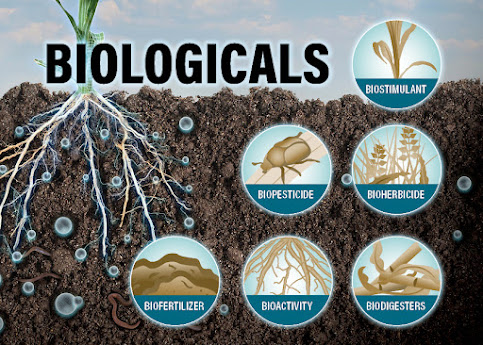Agricultural Biologicals: Revolutionizing Farming Practices for Sustainable Agriculture
Agricultural biologicals, also known as biopesticides, biofertilizers, and biostimulants, represent a burgeoning field in modern agriculture. As the world faces numerous challenges, such as food security, climate change, and environmental degradation, the adoption of agricultural biologicals has gained significance. These innovative solutions harness the power of natural organisms to promote plant health, increase crop yields, and reduce the reliance on conventional chemical inputs. This article delves into the various types of agricultural biologicals and their role in fostering sustainable farming practices.
Biopesticides:
Biopesticides are derived from natural sources such as plants, bacteria, and fungi, and are used to control pests, diseases, and weeds in crops. These eco-friendly alternatives offer targeted pest management, minimizing harm to beneficial insects, birds, and the environment. Unlike synthetic pesticides, biopesticides often have shorter residual effects, posing fewer risks to human health and the ecosystem. With integrated pest management practices, farmers can effectively use biopesticides to mitigate pest pressures and maintain sustainable crop production.
Biofertilizers:
Biofertilizers are living microorganisms that enhance soil fertility and nutrient availability to plants. They promote plant growth by fixing atmospheric nitrogen, solubilizing phosphates, and releasing essential nutrients. Through their symbiotic or associative relationships with crops, biofertilizers improve soil structure, reduce the need for chemical fertilizers, and increase agricultural productivity. By fostering a balanced soil ecosystem, farmers can enhance nutrient uptake, reduce soil erosion, and promote sustainable land management.
Biostimulants:
Biostimulants are substances that stimulate plant growth and improve plant resilience without directly providing nutrients. These products enhance nutrient uptake, root development, and stress tolerance in crops, enabling them to cope with adverse environmental conditions, such as drought, salinity, or temperature extremes. Biostimulants also aid in enhancing crop quality and yield potential while reducing the overall environmental impact associated with conventional agricultural practices.
Benefits of Agricultural Biologicals:
A. Environmentally friendly: Agricultural biologicals promote a greener approach to farming by reducing the use of chemical inputs and their adverse effects on the ecosystem.
B. Improved soil health: These products foster soil biodiversity and enhance soil structure, leading to long-term soil health and fertility.
C. Enhanced crop yield and quality: Agricultural biologicals contribute to increased crop productivity and improved quality, ultimately ensuring better market value for farmers.
D. Reduced chemical residues: By minimizing the use of synthetic chemicals, agricultural biologicals lead to lower chemical residues in food, enhancing food safety for consumers.
E. Climate change mitigation: Sustainable farming practices driven by agricultural biologicals aid in sequestering carbon in the soil, contributing to climate change mitigation efforts.
Conclusion:
Agricultural biologicals represent a transformative force in the realm of modern agriculture. These innovative solutions offer sustainable alternatives to conventional farming practices, reducing environmental impacts and safeguarding the health of ecosystems. By harnessing the power of nature, farmers can enhance their productivity, improve soil health, and adapt to the challenges posed by climate change. As the world continues to seek more sustainable food production systems, the adoption of agricultural biologicals is set to play a pivotal role in building a resilient and food-secure future.


.png)

Comments
Post a Comment